During a recent holiday, I spent a few days in the beautiful town of Granada. It’s an incredible place, home to one of the most stunning medieval Islamic monuments in the world—the Alhambra. But beyond its breathtaking views and rich history, Granada is also one of Spain’s best cities for tapas.
It’s a city that inspires, which is probably why the 20th-century Mexican poet Francisco Alarcón de Icaza once wrote, “Dale limosna mujer, que no hay en la vida nada, como la pena de ser ciego en Granada,” meaning, “Give him alms, lady, for there is nothing in life as wretched as being blind in Granada.” You’ll find this famous quote everywhere—in tiled murals, on souvenirs, even engraved on street signs. And speaking of signs, Granada’s name itself means pomegranate, a fruit beautifully depicted across the city on ceramics, street markers, and even sewer covers.
So what did I bring home from Granada? A couple of cookbooks, of course. One of them is a translation of an anonymous 13th-century Andalusian manuscript, a fascinating glimpse into the food of Al-Andalus, the Islamic-ruled territory of medieval Spain. Cooking from it feels a bit like deciphering a grandmother’s handwritten recipes—the kind that casually instructs you to “add as much flour as it can take.” But despite the vague instructions, it’s incredible to see how many recipes have remained unchanged over 800 years.
One that immediately caught my attention was a medieval version of arroz con leche, or Spanish rice pudding. Unlike the modern version, which is sweetened with sugar, this one relies on honey for its rich sweetness. With just a handful of simple ingredients—rice, milk, cinnamon, honey, and a final drizzle of melted butter—it’s a dish that’s both ancient and timeless. And since my husband happens to be a big fan of rice pudding, I had no choice but to try it.
The original medieval recipe reads like this:
Take rice and soak it in fresh water, enough to cover it, for a day or overnight. Then wash it and put it on the fire in a pot or kettle. Cook it with water or fresh milk, then add four or five ratls of clean honey from which you have skimmed the foam. Cook it carefully on a gentle fire. Moisten it, while cooking, with fresh milk until it sticks together, coagulates and becomes a paste. Pour it onto a platter and macerate it with a spoon. Make a hole in the center which you fill with fresh, melted butter and dust it with ground sugar and cinnamon and use it.

Why You’ll Love This Recipe:
- A Taste of History: This recipe is an authentic recreation of a 13th-century Andalusian dessert, giving you a direct link to medieval Spanish cuisine.
- Naturally Sweetened: Unlike modern rice puddings, this version uses honey instead of sugar, giving the dish a deep, floral sweetness.
- Creamy & Comforting: The slow cooking process results in an ultra-creamy texture with warm cinnamon notes.
- Simple, Wholesome Ingredients: Made with just rice, milk, honey, butter, and cinnamon—no complicated or processed ingredients.
- Customizable: Serve it warm or cold, adjust the sweetness, or even add a few modern touches while preserving the historic flavors.
Ingredients You’ll Need:
- Round Grain Rice (1 cup / 200g): Short-grain rice works best for its high starch content, creating a creamy texture. Arborio or bomba rice are great substitutes.
- Whole Milk (6 cups / 1.5L): Using full-fat milk ensures a smooth consistency.
- Good Quality Honey (½ cup / 175g): Opt for wildflower or orange blossom honey for extra flavor.
- Cinnamon Stick: Whole cinnamon sticks provide a more delicate flavor than ground cinnamon.
- Melted Butter: Traditionally, it was pooled in the center before serving.
- Ground Cinnamon: Sprinkled on top as a finishing touch.
Equipment You’ll Need:
- Large Bowl: For soaking the rice overnight.
- Colander: To drain excess water before cooking.
- Heavy-Bottomed Pot: Prevents scorching and allows for slow, even cooking.
- Wooden Spoon or Heatproof Spatula: Essential for stirring and preventing sticking.
- Lid or Plastic Wrap: To cover the pudding while it cools, preventing a skin from forming.
Important Cooking Tips:
- Soak the Rice Overnight: This softens the grains, reducing cooking time and allowing for better absorption of milk.
- Stir Frequently: To avoid burning or sticking to the pot, stir often, especially as the pudding thickens.
- Low and Slow Cooking: Simmering at a low temperature prevents curdling and helps achieve a silky, creamy texture.
- Adjust Sweetness: Since honey varies in intensity, start with a little and add more if needed. Remember that the sweetness will mellow as the pudding cools.
- Cooling Thickens the Pudding: The pudding will continue to set after removing it from heat, so don’t overcook it.
Planning Ahead:
- Make It in Advance: This rice pudding keeps well in the fridge, making it a great dessert to prepare ahead of time.
- Best Served After Resting: The flavors deepen as it sits, so making it a few hours before serving is ideal.
Storing, Freezing, Reheating:
- Refrigeration: Store in an airtight container in the fridge for up to 4 days.
- Freezing: Not recommended, as dairy-based puddings tend to separate when thawed.
- Reheating: Warm gently on the stovetop over low heat, adding a splash of milk to loosen the texture if needed.
FAQ:
Q: Can I use another type of rice?
A: Yes! While short-grain rice is traditional, you can use Arborio, bomba, or even sushi rice. Avoid long-grain varieties, as they don’t absorb liquid as well.
Q: Is this dessert very sweet?
A: The honey provides a natural sweetness, but it’s milder than sugar-based rice puddings. You can adjust by adding more honey to taste.
Q: Can I make this dairy-free?
A: Yes! Substitute whole milk with coconut milk or almond milk for a lactose-free version. Keep in mind that plant-based milk may alter the texture slightly.
Q: Why is my pudding too thick?
A: Rice pudding thickens as it cools. If it becomes too thick, stir in a bit of warm milk before serving to loosen it up.
Q: Can I add other flavors?
A: Absolutely! Try infusing the milk with orange peel, saffron, or rose water for a more complex flavor profile.
Q: What’s the best way to serve it?
A: Traditionally, it’s served with a drizzle of melted butter and a dusting of cinnamon, but you can also add chopped nuts, dried fruits, or a splash of extra honey.
Substitutions and Allergies:
- Dairy-Free: Swap whole milk for coconut, almond, or oat milk. Full-fat coconut milk will provide the closest texture.
- Low-Sugar: Reduce the amount of honey or use a sugar-free sweetener like monk fruit or erythritol.
- Spices: If you don’t like cinnamon, try cardamom or nutmeg for a different warm-spiced note.
Beverage Pairings:
- Spanish Sherry (Pedro Ximénez): A rich, sweet wine that works really well with the honeyed flavors of the pudding.
- Mint Tea: A refreshing contrast to the creamy, spiced dessert.
- Warm Spiced Milk: A comforting non-alcoholic option that complements the cinnamon-infused pudding.
How to Make Medieval Arroz Con Leche
Step 1: Soak the Rice
- Place the rice in a bowl and cover it with water.
- Let it soak overnight to soften the grains and improve the final texture.
Step 2: Drain and Cook
- The next day, drain the rice thoroughly using a colander.
- Transfer it to a large pot and add the milk and cinnamon stick.
Step 3: Simmer Gently
- Bring the mixture to a soft boil over low heat, stirring frequently.
- Let it cook for about 45 minutes, making sure to stir and scrape the bottom to prevent sticking.
Step 4: Sweeten and Continue Cooking
- Add the honey and stir well to combine.
- Continue cooking for another 20 minutes, stirring constantly, until the mixture thickens into a creamy, sticky texture.
Step 5: Cool and Serve
- Once the rice pudding reaches the desired consistency, remove it from heat.
- Taste for sweetness and adjust if needed. Keep in mind that it will thicken further as it cools.
- Transfer to a serving dish and cover with plastic wrap (pressing it directly onto the surface) to prevent a skin from forming—unless you like the skin!
Step 6: Final Touches
- Before serving, sprinkle ground cinnamon over the top and drizzle with melted butter. Enjoy warm or cold.

Medieval Arroz con Leche
- Total Time: 1 hour 10 minutes plus overnight soaking
- Yield: Serves 4-6 1x
Description
A lusciously creamy rice pudding, arroz con leche, is a hugely popular dessert all over Spain, originated during the Medieval Muslim rule of Spain. Here is a 13th century version, sweetened with honey instead of sugar.
Ingredients
Instructions
Step 1: Soak the Rice
- Place the rice in a bowl and cover it with water.
- Let it soak overnight to soften the grains and improve the final texture.
Step 2: Drain and Cook
- The next day, drain the rice thoroughly using a colander.
- Transfer it to a large pot and add the milk and cinnamon stick.
Step 3: Simmer Gently
- Bring the mixture to a soft boil over low heat, stirring frequently.
- Let it cook for about 45 minutes, making sure to stir and scrape the bottom to prevent sticking.
Step 4: Sweeten and Continue Cooking
- Add the honey and stir well to combine.
- Continue cooking for another 20 minutes, stirring constantly, until the mixture thickens into a creamy, sticky texture.
Step 5: Cool and Serve
- Once the rice pudding reaches the desired consistency, remove it from heat.
- Taste for sweetness and adjust if needed. Keep in mind that it will thicken further as it cools.
- Transfer to a serving dish and cover with plastic wrap (pressing it directly onto the surface) to prevent a skin from forming—unless you like the skin!
Step 6: Final Touches
- Before serving, sprinkle ground cinnamon over the top and drizzle with melted butter. Enjoy warm or cold.
Notes
Sweetness Variation: Medieval recipes used honey, but if you prefer, you can substitute some or all of it with sugar.
Thicker or Thinner Texture: If you prefer a looser consistency, add an extra 1/2 cup of milk while cooking.
Extra Flavor: Try adding a strip of orange or lemon peel to the milk for a subtle citrus note.
Serving Suggestion: This dish tastes even better the next day, as the flavors deepen and the texture becomes creamier.
- Prep Time: 5 mins
- Soaking Time: Overnight
- Cook Time: 1 hour 5 mins
- Category: Dessert
- Method: Stovetop
- Cuisine: Spanish
Nutrition
- Serving Size: 1 cup
- Calories: 310
- Sugar: 27g
- Sodium: 50mg
- Fat: 7g
- Saturated Fat: 4g
- Unsaturated Fat: 2.5g
- Trans Fat: 0g
- Carbohydrates: 54g
- Fiber: 7g
- Protein: 1g
- Cholesterol: 20mg


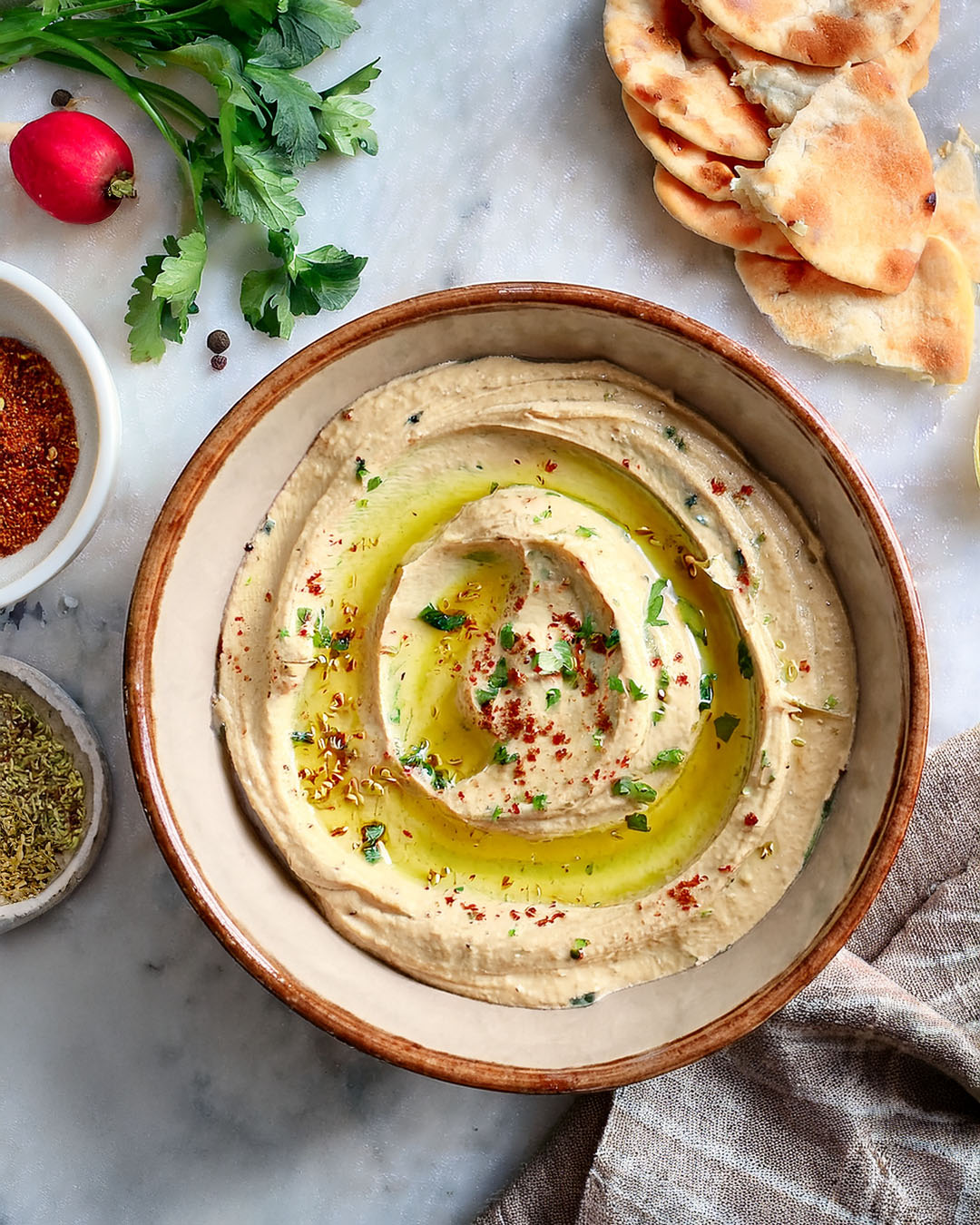


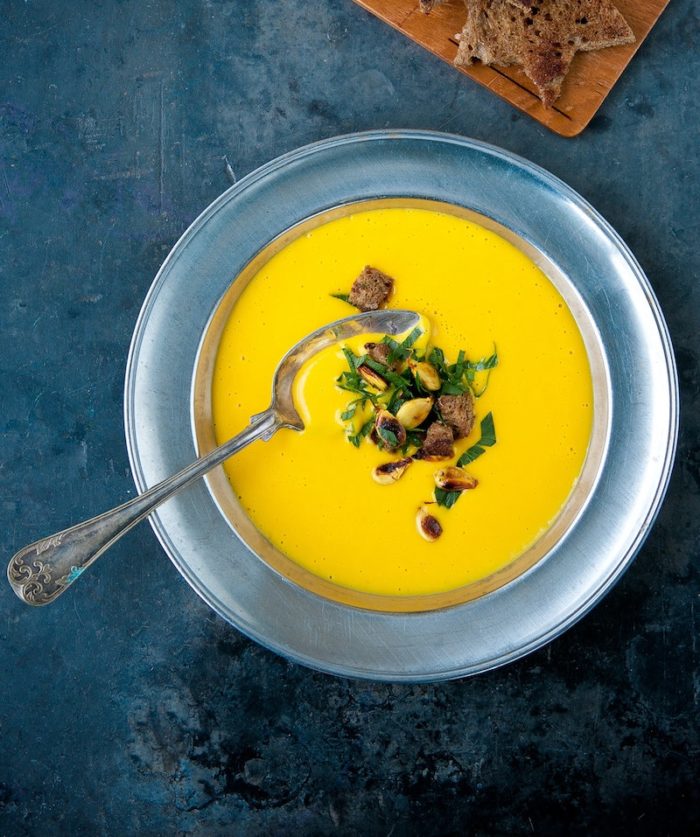
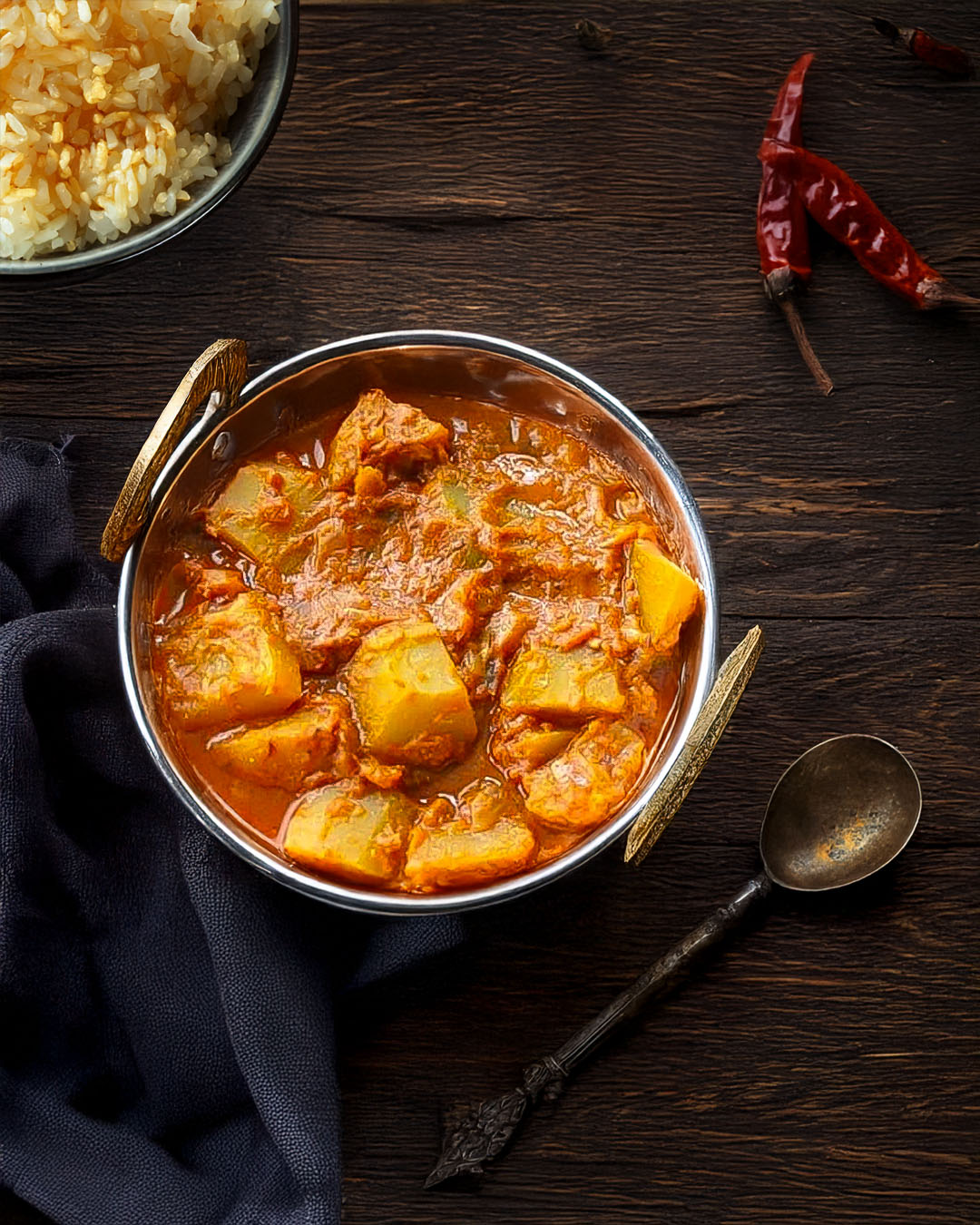
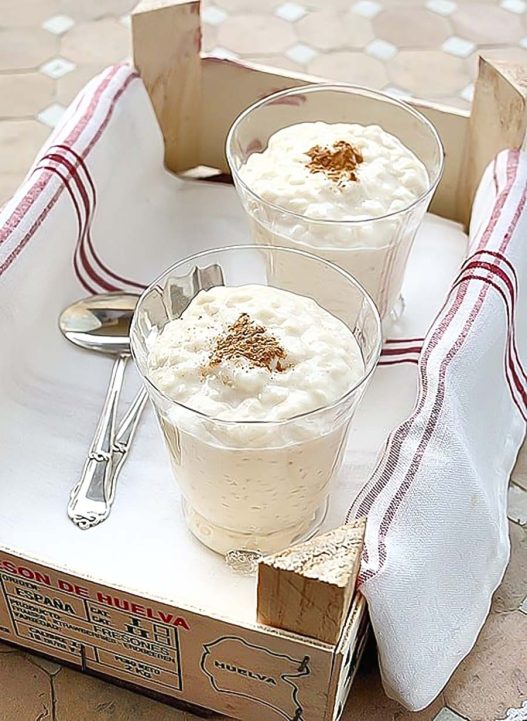
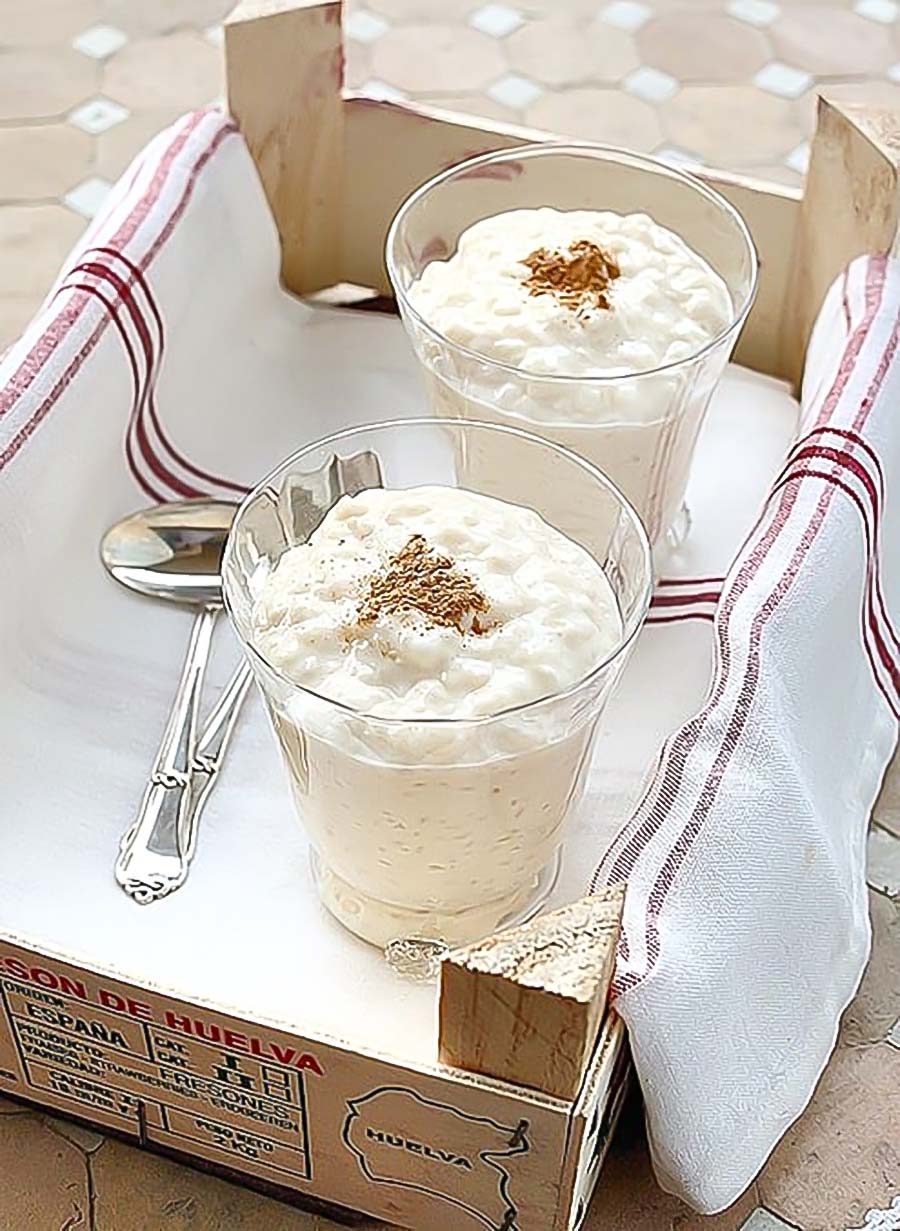




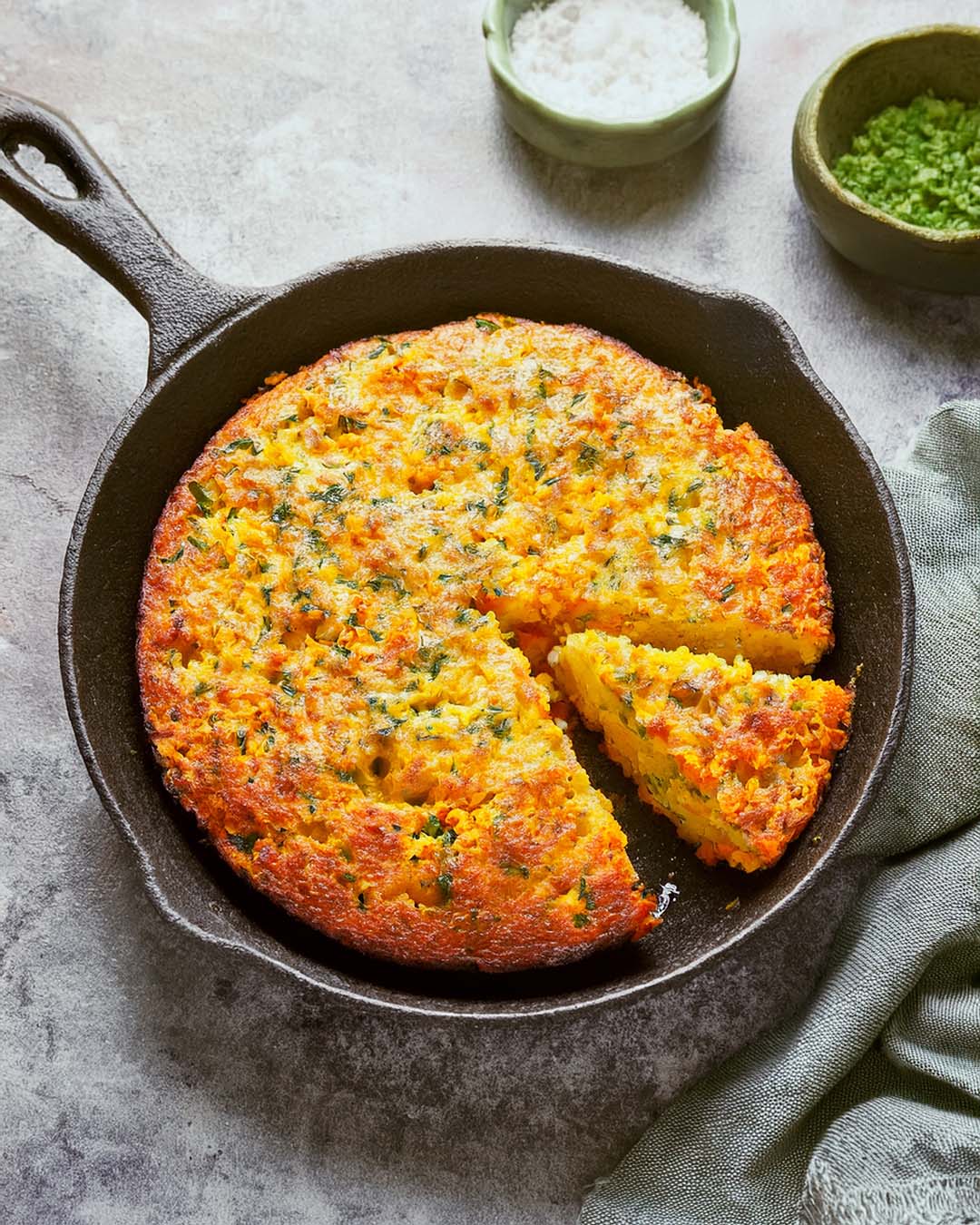
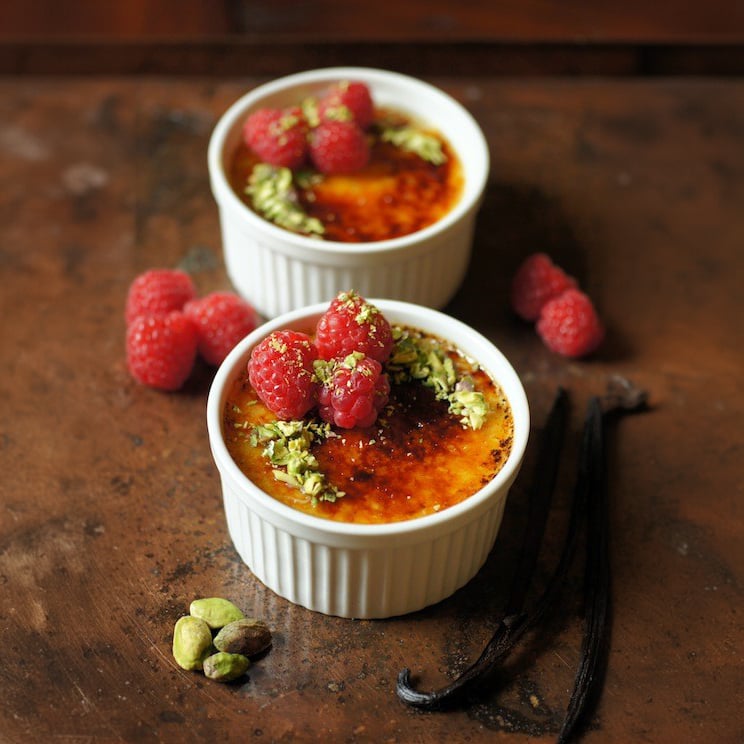

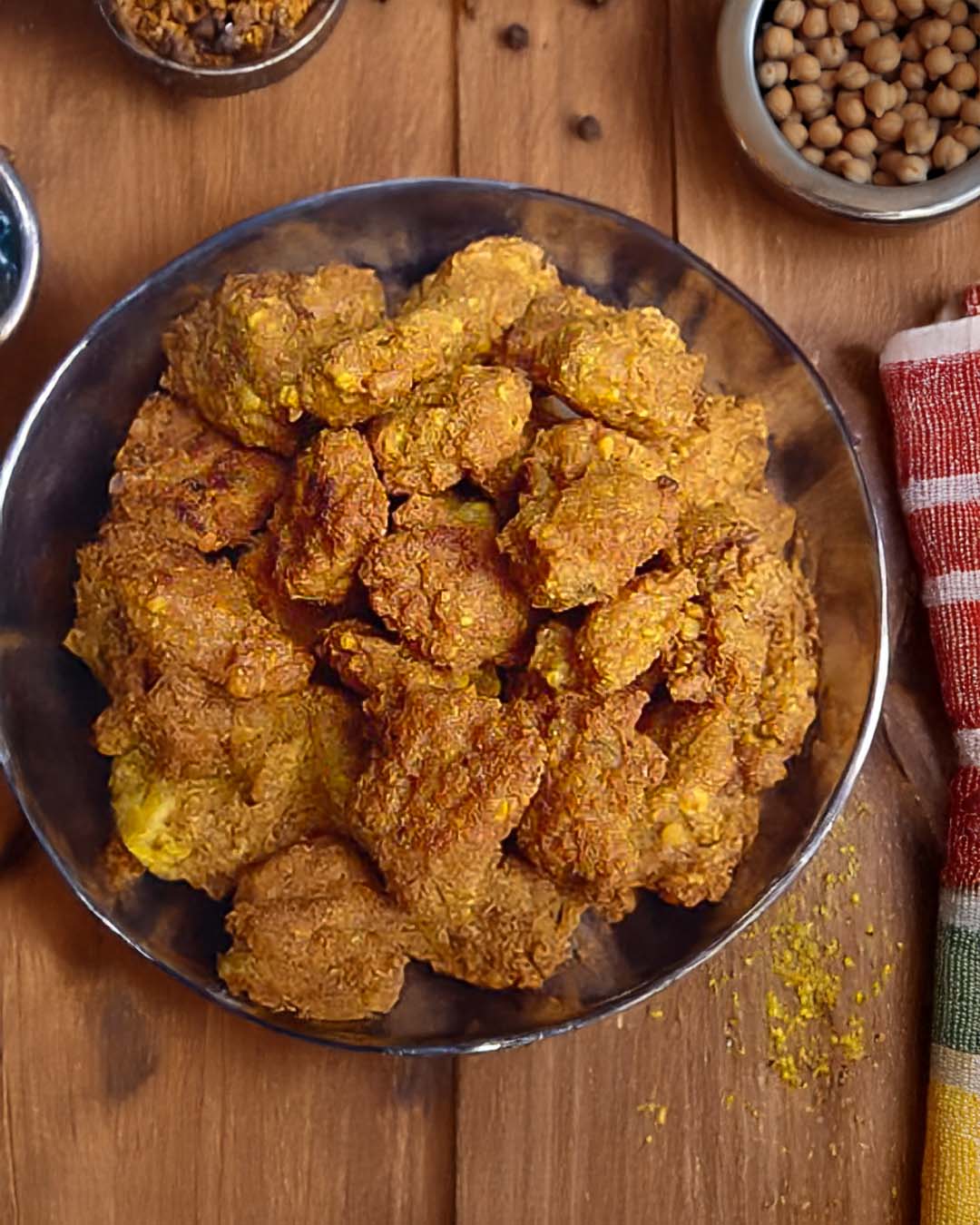
This is a fantastic old recipe, made it and loved it! Can absolutely recommend.
A pleasure I am sure to enjoy in the future, finding your web site & Pinterest postings. We built a house & lived in Javea/Alicante for 5 1/2 years. I miss it tremendously! I look forward to enjoying your recipes…especially the rice!
Here is a link to one of my published articles. So many that used to be on-line, no longer are…unfortunately.
Hasta pronto!
Edible Flowers – More than Just a Pretty Plate
http://www.epicurean-traveler.com/epicurean.com/Website%20Articles/Edible...
Trendier kitchens are producing dishes that blossom with flavor . By Sandra Lee Larsen “He is happiest, who hath power to gather wisdom from a flower.”
What a beautiful trip, the agriculture is stunning… I am a fan of rice pudding and this looks wonderful! How very exciting to find cookbooks with such a history :)
I don´t like arroz con leche, but I live in Granada and love how you describe it. I am glad I am not blind! I hope you enjoyed Semana Santa here.
Thank you, Claudia, you’re a lucky girl! We did have a grand time.
oh…he descubierto tres cosas…una que existes y encima en Madrid, (yo estoy en la sierra norte)…dos…toda la semana pasada me tire buscando recetas medievales..y hoy me ha entusiasmado encontrarte..y tres….tienes un pedazo de blog….muchas gracias…me apuntare a tu casita…..
Cookemila!! Encantada, nos vemos!
I remember loving arroz con leche when I first went to Spain. The pre-soak is an interesting step–I haven’t seen that before. I enjoyed your pictures of Granada too–I still remember my trip there so well; the narrow winding streets, the white-washed walls and colorful tiles, and of course the Alhambra!
Hope you try it! ;)
Una crónica genial!!!!!
Miriam, la próxima vez, una horita más… y te pones en Nerja….
Me ha encantado la receta, la probaré, a mi me encanta el arroz con leche. Y las fotos impresionantes.
Enhorabuena!!!!
Un abrazo, Begoña
Síii! Con las ganas que tengo yo de bajar a esa parte… la próxima vez, nos vemos… ;)